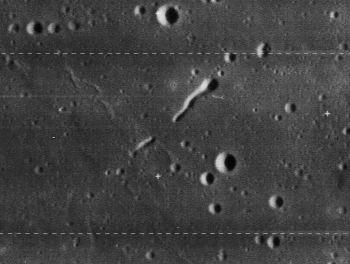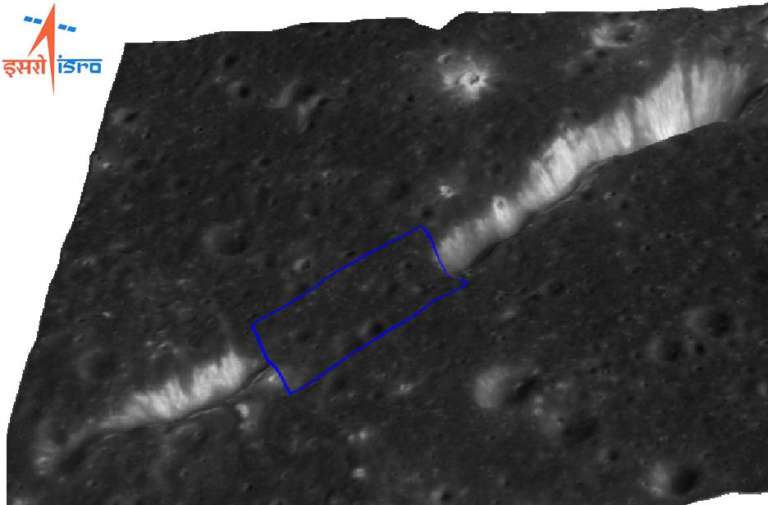Emily Lakdawalla • Jun 21, 2010
Likely candidate for an un-collapsed lava tube
In February, the Chandrayaan-1 science team had a meeting in Ahmedabad, India, to share their results with each other. Indian space blogger Pradeep Mohandas forwarded me a document containing numerous abstracts from that meeting. I'm not sure that the document itself was intended for public consumption; some of the results in it may be lined up for formal publication, so I won't post the full document here.
But there was one cool little paper that I just had to write about: "Identification of an Un-Collapsed Lava Tube for Possible Future Human Settlement Using Chandryaan-1 TMC Data," by A. S. Arya, R. P. Rajasekhar, Ajai, A. S. Kiran Kumar, and R. R. Navalfund of the Space Applications Centre (SAC) of the Indian Space Research Organisation (ISRO). I contacted Dr. Arya, who gave me permission to post the images below -- a big thanks for those images!
The paper concerned one of my favorite topics in lunar geology: sinuous rilles, the river-like lava channels that criscross the lunar volcanic plains. By analogy to Earthly volcanic features, it is assumed that at least some lunar rilles were once enclosed lava tubes whose roofs have collapsed, revealing them to view from space. Others may never have been roofed. If some (most?) rilles were once roofed, then there may be rilles that still wend their way underground, with roofs intact. Such locations, if they can be found, would be really desirable spots for future human exploration. Why? Because one way to protect humans from the intense solar radiation and the broad swings in temperature that make life on the lunar surface hazardous is to build human habitations underground, where many meters of rock can shield them from the elements.
But it's hard to find roofed sections of tunnel from space, because if their roofs are intact, then you can't see the cavern underground. Arya and his coauthors described one lunar rille that was considered a good candidate for a location where there really might be an uncollapsed segment that now contains a subterranean cavern. Here's a view of the spot from Lunar Orbiter IV:

Arya described its appearance in Chandrayaan-1 Terrain Mapping Camera (TMC) images:
It comprises two rilles separated by an uncollapsed portion The rille appears like a cobra hood. This rille runs for about 3.65 km in northeast-southwest direction and another smaller rille is 0.73 km long, situated 2 km southwest of the existing main rille, which appears to be an extension of this tube while the intermittent stretch between the two rilles seems to be the roof of the lava tube which did not collapse for some reason.
The photo makes it seem plausible that the two rille segments are portions of a single original tube, but that doesn't necessarily mean that the segment in between is, at present, an underground cavern. It might not have collapsed because it contains pooled lava, for instance, which plugged it up.
But by examining the TMC images of the rille, Arya and his coworkers make a good argument that the thing really is hollow. Here are two perspective views on the tube generated from TMC's stereoscopic images:

Based on TMC's stereoscopic view, Arya and his coworkers made the following arguments for why the middle segment is likely to be an open cavern.
The drop between the two rilles, along the common strike, is of the order of about 120 meters (-1,260 to -1,140 meters). This suggests that the smaller rille is lower than the main rille, thus suggesting a continuity of the main rille in southwest direction. Within the study area, south of the main rille, the topography shows a drop in the slope, around 160 meters (-1,100 to -1,260 meters depth) from east-southeast to west-northwest. This rules out any possibility of lava flow filling the intermittent portion of these two rilles after their emplacement as one single volcanic tube while the remaining portion in between the two rilles is the un-collapsed roof of the same lava tube.
It's a neat little argument, and exemplary of the nifty local geology yet to be investigated using the outstanding stereoscopic cameras on Chandrayaan-1, not to mention Kaguya. These are the kinds of studies that need to be done to help determine which locations should be prioritized for investigation up close, and in stereo, by higher-resolution (but lower areal coverage) instruments like Lunar Reconnaissance Orbiter Camera.
Support our core enterprises
Your support powers our mission to explore worlds, find life, and defend Earth. You make all the difference when you make a gift. Give today!
Donate

 Explore Worlds
Explore Worlds Find Life
Find Life Defend Earth
Defend Earth

